Experimental Comparison of Diesel and Crude Rapeseed Oil Combustion in a Swirl Burner
Abstract
:Featured Applications
Abstract
1. Introduction
2. Materials and Methods
2.1. Experimental Setup
2.2. Atomization Characteristics
2.3. The Continuous Wavelet Transform
3. Results and Discussion
3.1. Spectral Analysis of Diesel Oil Combustion
3.2. Spectral Comparison of Diesel and Rapeseed Oil Combustion
3.3. Pollutant Emission
4. Conclusions
- 1.
- Swirl combustion is characterized by narrow-band frequencies at a few hundred Hz; however, high-frequency components can be located in a wider band. Therefore, Wavelet transform is an excellent tool to evaluate the temporal signal, as it is a multi-scale technique, properly fitting to the acoustic signal of a flame;
- 2.
- Frequencies of f1 = 230 Hz, f2 = 500 Hz, f3 = 1600 Hz, f4 = 3200 Hz were found to dominate the investigated spectra. The joint histogram of the wavelet coefficients and single histogram of the pressure signal was evaluated as the spectrum showed stochastic magnitude variation. Stable V-shaped flames, which were observed only in the case of diesel oil combustion, were governed by f1 and f2, while the characteristic frequencies of straight flames were f3 and f4. Flame blowout was accompanied by decreasing amplitudes of both pressure fluctuations and wavelet coefficients;
- 3.
- Combustion of rapeseed oil and diesel oil were found to be similar from an acoustic point of view. The joint histogram of the governing frequencies showed identical shape. However, flame acoustics differed notably when a 15° quarl was put on the burner lip, indicating that the analysis is highly sensitive to the burner geometry;
- 4.
- Pollutant emission of rapeseed oil combustion slightly exceeded that of diesel oil combustion. The quarl affected the pollutant emissions favorably in the case of diesel oil combustion since the rapeseed oil flame was blown out with a quarl. Rapeseed oil combustion might result in high NOX emission when the droplet size is small due to the possibility of crust formation, hence hindering the evaporation process.
Funding
Conflicts of Interest
References
- Chen, H.-G.; Zhang, Y.-H.P. New biorefineries and sustainable agriculture: Increased food, biofuels, and ecosystem security. Renew. Sustain. Energy Rev. 2015, 47, 117–132. [Google Scholar] [CrossRef]
- IEA. Installed Power Generation Capacity by Source in the Stated Policies Scenario, 2000–2040. Available online: https://www.iea.org/data-and-statistics/charts/installed-power-generation-capacity-by-source-in-the-stated-policies-scenario-2000-2040 (accessed on 1 May 2020).
- IEA. Renewables. Available online: https://www.iea.org/reports/global-energy-review-2020/renewables (accessed on 20 June 2020).
- Feuvre, P.L. Are Aviation Biofuels Ready for Take off? Available online: https://www.iea.org/commentaries/are-aviation-biofuels-ready-for-take-off (accessed on 20 June 2020).
- Mandolesi De Araújo, C.D.; De Andrade, C.C.; e Silva, E.D.S.; Dupas, F.A. Biodiesel production from used cooking oil: A review. Renew. Sustain. Energy Rev. 2013, 27, 445–452. [Google Scholar] [CrossRef]
- Adeniyi, O.M.; Azimov, U.; Burluka, A. Algae biofuel: Current status and future applications. Renew. Sustain. Energy Rev. 2018, 90, 316–335. [Google Scholar] [CrossRef]
- Brynolf, S.; Taljegard, M.; Grahn, M.; Hansson, J. Electrofuels for the transport sector: A review of production costs. Renew. Sustain. Energy Rev. 2018, 81, 1887–1905. [Google Scholar] [CrossRef]
- Channiwala, S.A.; Parikh, P.P. A unified correlation for estimating HHV of solid, liquid and gaseous fuels. Fuel 2002, 81, 1051–1063. [Google Scholar] [CrossRef]
- Chiong, M.C.; Chong, C.T.; Ng, J.H.; Lam, S.S.; Tran, M.V.; Chong, W.W.F.; Mohd Jaafar, M.N.; Valera-Medina, A. Liquid biofuels production and emissions performance in gas turbines: A review. Energy Convers. Manag. 2018, 173, 640–658. [Google Scholar] [CrossRef] [Green Version]
- Liu, S.; Chen, W.; Zhu, Z.; Jiang, S.; Ren, T.; Guo, H. A review of the developed new model biodiesels and their effects on engine combustion and emissions. Appl. Sci. 2018, 8, 2303. [Google Scholar] [CrossRef] [Green Version]
- Siwale, L.; Kristóf, L.; Adam, T.; Bereczky, A.; Mbarawa, M.; Penninger, A.; Kolesnikov, A. Combustion and emission characteristics of n-butanol/diesel fuel blend in a turbo-charged compression ignition engine. Fuel 2013, 107, 409–418. [Google Scholar] [CrossRef]
- Kim, H.Y.; Ge, J.C.; Choi, N.J. Effects of Ethanol—Diesel on the Combustion and Emissions from a Diesel Engine at a Low Idle Speed. Appl. Sci. 2020, 10, 4153. [Google Scholar] [CrossRef]
- Toldrá-Reig, F.; Mora, L.; Toldrá, F. Trends in biodiesel production from animal fatwaste. Appl. Sci. 2020, 10, 3644. [Google Scholar] [CrossRef]
- Seljak, T.; Buffi, M.; Valera-Medina, A.; Chong, C.T.; Chiaramonti, D.; Katrašnik, T. Bioliquids and their use in power generation—A technology review. Renew. Sustain. Energy Rev. 2020, 129, 109930. [Google Scholar] [CrossRef]
- Mahfouz, A.; Moneib, H.A.; El-fatih, A.; El-Sherif, A.F.; Ayoub, H.S.; Emara, A. Comparative study among waste cooking oil blends flame spectroscopy as an alternative fuel through using an industrial burner. Renew. Energy 2020, 159, 893–907. [Google Scholar] [CrossRef]
- Lehto, J.; Oasmaa, A.; Solantausta, Y.; Kytö, M.; Chiaramonti, D. Review of fuel oil quality and combustion of fast pyrolysis bio-oils from lignocellulosic biomass. Appl. Energy 2014, 116, 178–190. [Google Scholar] [CrossRef]
- Prussi, M.; Chiaramonti, D.; Riccio, G.; Martelli, F.; Pari, L. Straight vegetable oil use in Micro-Gas Turbines: System adaptation and testing. Appl. Energy 2012, 89, 287–295. [Google Scholar] [CrossRef]
- Buffi, M.; Seljak, T.; Cappelletti, A.; Bettucci, L.; Valera-Medina, A.; Katrašnik, T.; Chiaramonti, D. Performance and emissions of liquefied wood as fuel for a small scale gas turbine. Appl. Energy 2018, 230, 1193–1204. [Google Scholar] [CrossRef]
- Nevrlý, V.; Šomplák, R.; Putna, O.; Pavlas, M. Location of mixed municipal waste treatment facilities: Cost of reducing greenhouse gas emissions. J. Clean. Prod. 2019, 239, 118003. [Google Scholar] [CrossRef]
- Buffi, M.; Cappelletti, A.; Seljak, T.; Katrašnik, T.; Valera-Medina, A.; Chiaramonti, D. Emissions and Combustion Performance of a Micro Gas Turbine Powered with Liquefied Wood and its Blends. In Proceedings of the 9th International Conference on Applied Energy, Cardiff, UK, 21–24 August 2017; Volume 142, pp. 297–302. [Google Scholar]
- Kaushik, L.K.; Muthukumar, P. Thermal and economic performance assessments of waste cooking oil /kerosene blend operated pressure cook-stove with porous radiant burner. Energy 2020, 206, 118102. [Google Scholar] [CrossRef]
- Akinyemi, O.S.; Jiang, L. Development and combustion characterization of a novel twin-fluid fuel injector in a swirl-stabilized gas turbine burner operating on straight vegetable oil. Exp. Therm. Fluid Sci. 2019, 102, 279–290. [Google Scholar] [CrossRef]
- Akinyemi, O.S.; Jiang, L.; Hernandez, R.; McIntyre, C.; Holmes, W. Combustion of straight algae oil in a swirl-stabilized burner using a novel twin-fluid injector. Fuel 2019, 241, 176–187. [Google Scholar] [CrossRef]
- Murugan, S.; Ramaswamy, M.C.; Nagarajan, G. Performance, emission and combustion studies of a DI diesel engine using Distilled Tyre pyrolysis oil-diesel blends. Fuel Process. Technol. 2008, 89, 152–159. [Google Scholar] [CrossRef]
- Park, H.Y.; Han, K.; Kim, H.H.; Park, S.; Jang, J.; Yu, G.S.; Ko, J.H. Comparisons of combustion characteristics between bioliquid and heavy fuel oil combustion in a 0.7 MWth pilot furnace and a 75 MWe utility boiler. Energy 2020, 192, 116557. [Google Scholar] [CrossRef]
- Faeth, G.M.; Hsiang, L.P.; Wu, P.K. Structure and breakup properties of sprays. Int. J. Multiph. Flow 1995, 21, 99–127. [Google Scholar] [CrossRef]
- Dryer, F.L. Water addition to practical combustion systems—Concepts and applications. Symp. Combust. 1977, 16, 279–295. [Google Scholar] [CrossRef]
- de Jager, B.; Kok, J.B.W.; Skevis, G. The effects of water addition on pollutant formation from LPP gas turbine combustors. Proc. Combust. Inst. 2007, 31, 3123–3130. [Google Scholar] [CrossRef]
- Seljak, T.; Pavalec, K.; Buffi, M.; Valera-Medina, A.; Katrasnik, T.; Chiaramonti, D. Challenges and Solutions for Utilization of Bioliquids in Microturbines. J. Eng. Gas Turbines Power 2019, 141, 031401. [Google Scholar] [CrossRef] [Green Version]
- Kun-Balog, A.; Sztankó, K. Reduction of pollutant emissions from a rapeseed oil fired micro gas turbine burner. Fuel Process. Technol. 2015, 134, 352–359. [Google Scholar] [CrossRef]
- Urbán, A.; Malý, M.; Józsa, V.; Jedelský, J. Effect of liquid preheating on high-velocity airblast atomization: From water to crude rapeseed oil. Exp. Therm. Fluid Sci. 2019, 102, 137–151. [Google Scholar] [CrossRef]
- Hsuan, C.Y.; Hou, S.S.; Wang, Y.L.; Lin, T.H. Water-In-Oil emulsion as boiler fuel for Reduced NOx emissions and improved energy saving. Energies 2019, 12, 1002. [Google Scholar] [CrossRef] [Green Version]
- Yang, D.; Xia, Z.; Huang, L.; Ma, L.; Feng, Y.; Xiao, Y. Exprimental study on the evaporation characteristics of the kerosene gel droplet. Exp. Therm. Fluid Sci. 2018, 93, 171–177. [Google Scholar] [CrossRef]
- Khateeb, A.A.; Elbaz, A.M.; Guida, P.; Roberts, W.L. Influence of Asphaltene Concentration on the Combustion of a Heavy Fuel Oil Droplet. Energy Fuels 2018, 32, 12981–12991. [Google Scholar] [CrossRef] [Green Version]
- Elbaz, A.M.; Khateeb, A.A.; Roberts, W.L. PM from the combustion of heavy fuel oils. Energy 2018, 152, 455–465. [Google Scholar] [CrossRef] [Green Version]
- Józsa, V.; Csemány, D. Evaporation of renewable fuels in a lean premixed prevaporized burner. Period. Polytech. Mech. Eng. 2016, 60, 82–88. [Google Scholar] [CrossRef] [Green Version]
- Lefebvre, A.H.; Ballal, D.R. Gas Turbine Combustion, 3rd ed.; CRC Press: Boca Raton, FL, USA, 2010; ISBN 9781420086058. [Google Scholar]
- Correa, S.M. A Review of NOx Formation Under Gas-Turbine Combustion Conditions. Combust. Sci. Technol. 1993, 87, 329–362. [Google Scholar] [CrossRef]
- Noiray, N.; Denisov, A. A method to identify thermoacoustic growth rates in combustion chambers from dynamic pressure time series. Proc. Combust. Inst. 2017, 36, 3843–3850. [Google Scholar] [CrossRef]
- Glassman, I.; Yetter, R. Combustion, 4th ed.; Academic Press: Burlington, VT, USA, 2008; ISBN 978-0-12-088573-2. [Google Scholar]
- Józsa, V.; Kun-Balog, A. Stability and emission analysis of crude rapeseed oil combustion. Fuel Process. Technol. 2017, 156, 204–210. [Google Scholar] [CrossRef]
- Singh, A.V.; Yu, M.; Gupta, A.K.; Bryden, K.M. Thermo-acoustic behavior of a swirl stabilized diffusion flame with heterogeneous sensors. Appl. Energy 2013, 106, 1–16. [Google Scholar] [CrossRef]
- Khalil, A.E.E.; Gupta, A.K. Acoustic and heat release signatures for swirl assisted distributed combustion. Appl. Energy 2017, 193, 125–138. [Google Scholar] [CrossRef] [Green Version]
- Candel, S.; Durox, D.; Schuller, T.; Bourgouin, J.-F.; Moeck, J.P. Dynamics of Swirling Flames. Annu. Rev. Fluid Mech. 2014, 46, 147–173. [Google Scholar] [CrossRef]
- Gotoda, H.; Hayashi, K.; Tsujimoto, R.; Domen, S.; Tachibana, S. Dynamical Properties of Combustion Instability in a Laboratory-Scale Gas-Turbine Model Combustor. J. Eng. Gas Turbines Power 2016, 139, 041509. [Google Scholar] [CrossRef]
- Novotni, G.I.; Józsa, V. Sound Pressure Level Analysis of a Liquid-Fueled Lean Premixed Swirl Burner with Various Quarls. Acoustics 2020, 2, 10. [Google Scholar] [CrossRef] [Green Version]
- Chui, C.K. An Introduction to Wavelets, 1st ed.; Academic Press: San Diego, CA, USA, 1992; ISBN 9780121745844. [Google Scholar]
- Nair, S.; Lieuwen, T. Acoustic Detection of Blowout in Premixed Flames. J. Propuls. Power 2005, 21, 32–39. [Google Scholar] [CrossRef]
- Chaudhuri, S.; Cetegen, B.M. Blowoff characteristics of bluff-body stabilized conical premixed flames with upstream spatial mixture gradients and velocity oscillations. Combust. Flame 2008, 153, 616–633. [Google Scholar] [CrossRef]
- Dey, D.; Chaudhari, R.R.; Mukhopadhyay, A.; Sen, S.; Chakravorti, S. A cross-wavelet transform aided rule based approach for early prediction of lean blow-out in swirl-stabilized dump combustor. Int. J. Spray Combust. Dyn. 2015, 7, 69–89. [Google Scholar] [CrossRef]
- Idahosa, U.; Basu, S.; Miglani, A. System Level Analysis of Acoustically Forced Nonpremixed Swirling Flames. J. Therm. Sci. Eng. Appl. 2014, 6, 031015. [Google Scholar] [CrossRef]
- Józsa, V.; Kun-Balog, A. Effect of quarls on the blowout stability and emission of pollutants of a liquid-fueled swirl burner. J. Eng. Gas Turbines Power 2018, 140, 111502. [Google Scholar] [CrossRef]
- Broumand, M.; Albert-Green, S.; Yun, S.; Hong, Z.; Thomson, M.J. Spray combustion of fast pyrolysis bio-oils: Applications, challenges, and potential solutions. Prog. Energy Combust. Sci. 2020, 79, 100834. [Google Scholar] [CrossRef]
- Beér, J.M.; Chigier, N.A. Combustion Aerodynamics; Robert, E., Ed.; Krieger Publishing Company, Inc.: London, UK, 1972. [Google Scholar]
- Stöhr, M.; Boxx, I.; Carter, C.; Meier, W. Dynamics of lean blowout of a swirl-stabilized flame in a gas turbine model combustor. Proc. Combust. Inst. 2011, 33, 2953–2960. [Google Scholar] [CrossRef] [Green Version]
- Lefebvre, A.H.; McDonell, V.G. Atomization and Sprays, 2nd ed.; CRC Press: Boca Raton, FL, USA, 2017; ISBN 978-1-4987-3625-1. [Google Scholar]
- Addison, P.S. The Illustrated Wavelet Transform Handbook; IOP Publishing Ltd.: Edinburgh, UK, 2002; ISBN 0750306920. [Google Scholar]
- Huang, Y.; Yang, V. Dynamics and stability of lean-premixed swirl-stabilized combustion. Prog. Energy Combust. Sci. 2009, 35, 293–364. [Google Scholar] [CrossRef]
- Reed, R.J. North American Combustion Handbook, 3rd ed.; North American Mfg. Co.: Cleveland, OH, USA, 1997; ISBN 9780960159635. [Google Scholar]
- Idahosa, U.; Saha, A.; Xu, C.; Basu, S. Non-premixed acoustically perturbed swirling flame dynamics. Combust. Flame 2010, 157, 1800–1814. [Google Scholar] [CrossRef]
- Komarek, T.; Polifke, W. Impact of Swirl Fluctuations on the Flame Response of a Perfectly Premixed Swirl Burner. J. Eng. Gas Turbines Power 2010, 132, 061503. [Google Scholar] [CrossRef]
- Zhou, H.; Huang, Y.; Meng, S. Response of non-premixed swirl-stabilized flames to acoustic excitation and jet in cross-flow perturbations. Exp. Therm. Fluid Sci. 2017, 82, 124–135. [Google Scholar] [CrossRef]
- Gotoda, H.; Kobayashi, H.; Hayashi, K. Chaotic dynamics of a swirling flame front instability generated by a change in gravitational orientation. Phys. Rev. E 2017, 95, 022201. [Google Scholar] [CrossRef] [PubMed]
- Hayashi, Y.; Funatsu, M.; Kobayashi, H.; Gotoda, H. Nonlinear analysis on dynamical motion of combustion instability in a laboratory-scale gas turbine model combustor. In Proceedings of the 8th European Combustion Meeting, Dubrovnik, Croatia, 18–21 April 2017; pp. 2505–2507. [Google Scholar]
- Kabiraj, L.; Sujith, R.I. Nonlinear self-excited thermoacoustic oscillations: Intermittency and flame blowout. J. Fluid Mech. 2012, 713, 376–397. [Google Scholar] [CrossRef]
- Oberleithner, K.; Stöhr, M.; Im, S.H.H.; Paschereit, C.O.; St, M.; Im, S.H.H.; Paschereit, C.O. Linear stability analysis of turbulent swirling combustor flows: Impact of flow field and flame shapes on the PVC. In Proceedings of the European Combustion Meeting—2015, Budapest, Hungary, 30 March–2 April 2015. [Google Scholar]
- Ebi, D.; Denisov, A.; Bonciolini, G.; Boujo, E.; Noiray, N.; Denisov, A.; Bonciolini, G.; Noiray, N.; Ebi, D.; Denisov, A.; et al. Flame dynamics intermittency in the bi-stable region near a subcritical hopf bifurcation. In Turbo Expo: Power for Land, Sea, and Air, Proceedings of the Turbomachinery Technical Conference and Exposition; American Society of Mechanical Engineers: Charlotte, NC, USA, 26–30 June 2017; ISBN 978-0-7918-5085-5. [Google Scholar]
- Hadef, R.; Merkle, K.; Lenze, B.; Leuckel, W. An experimental study of airblast atomizer spray flames. J. Inst. Energy 2000, 73, 50–55. [Google Scholar]


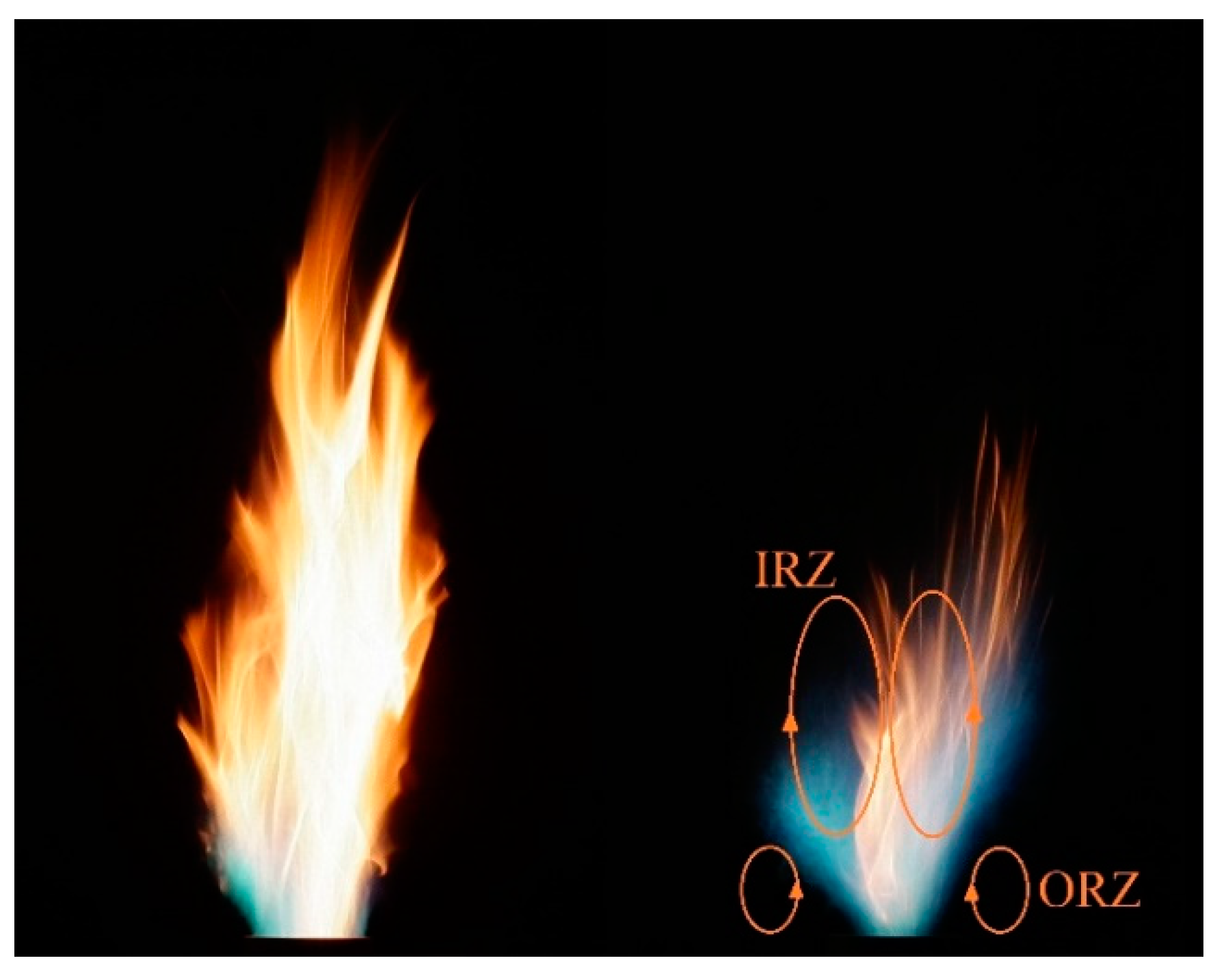

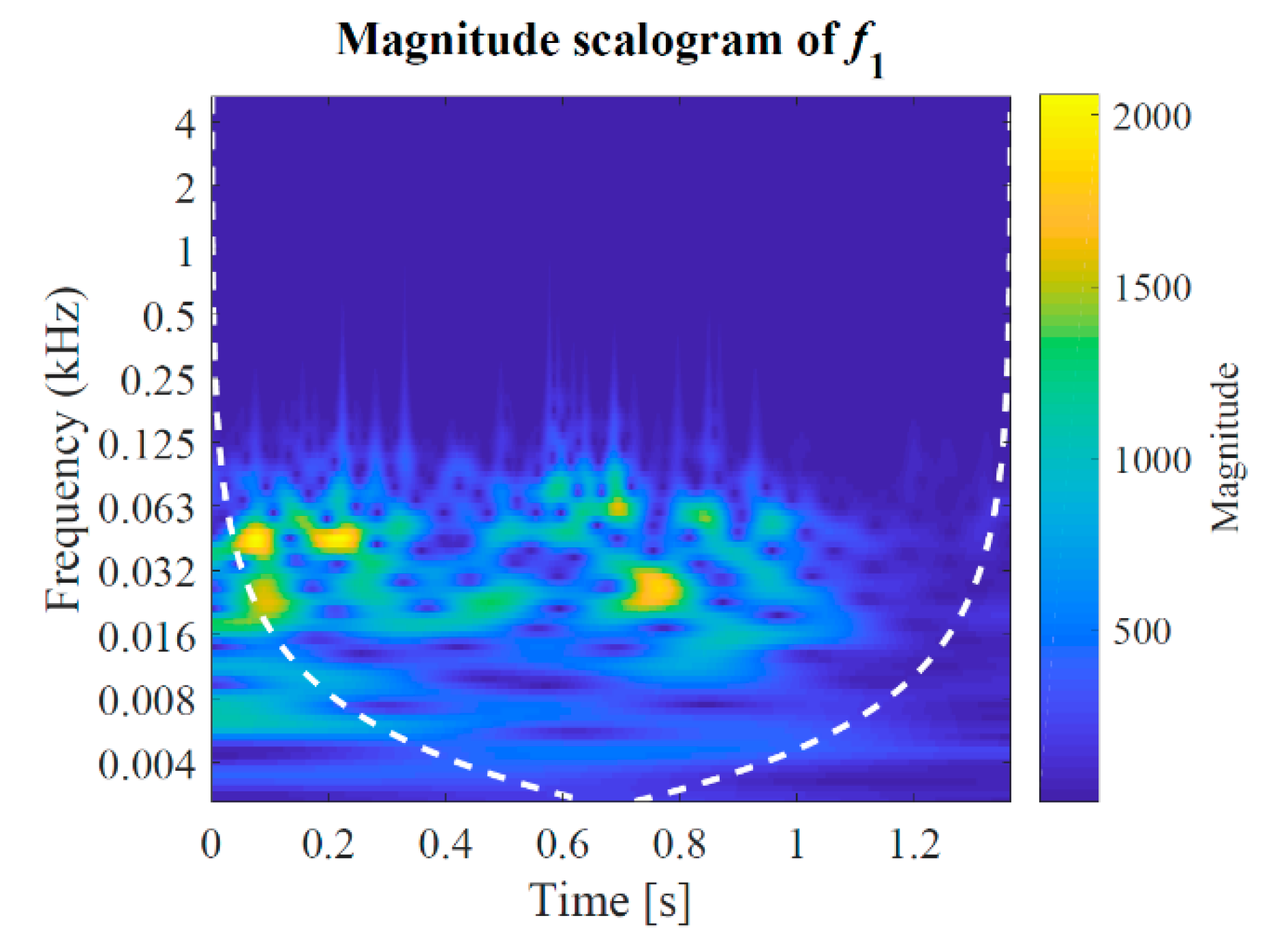
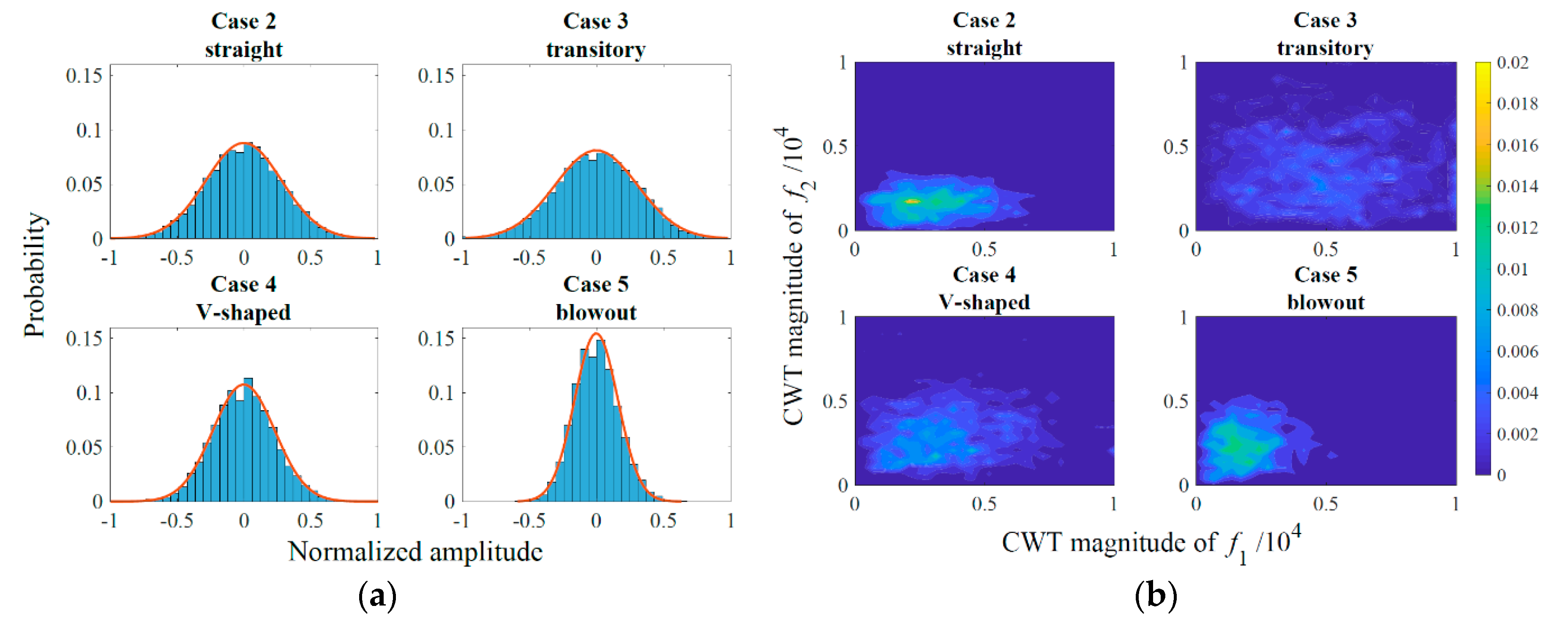
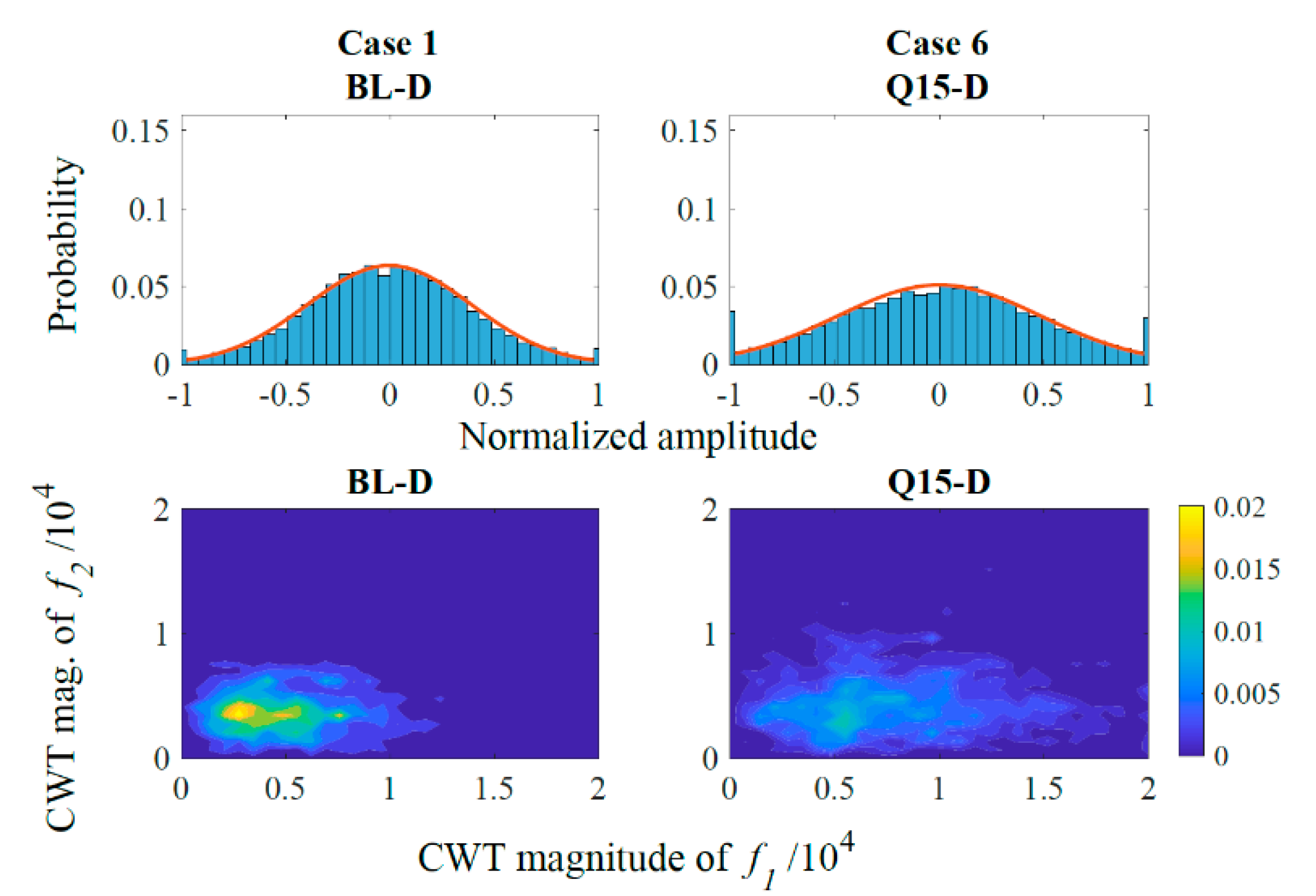
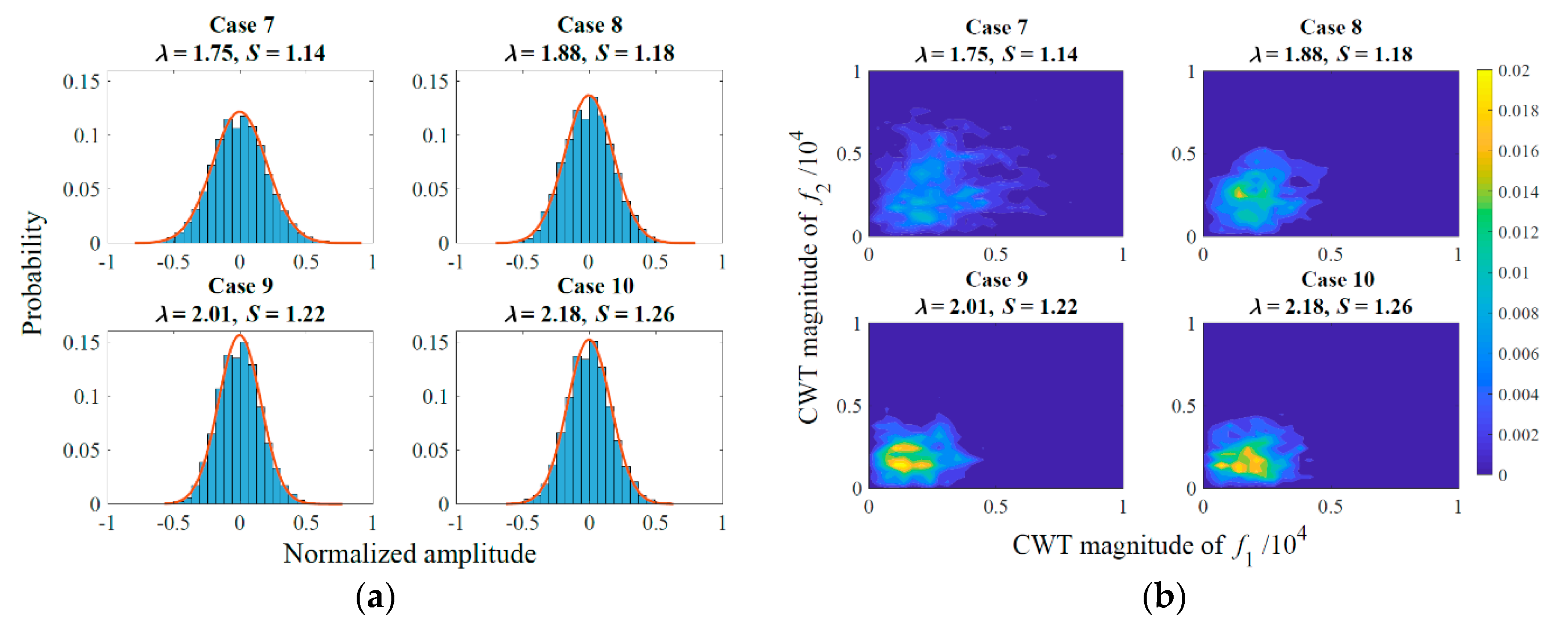
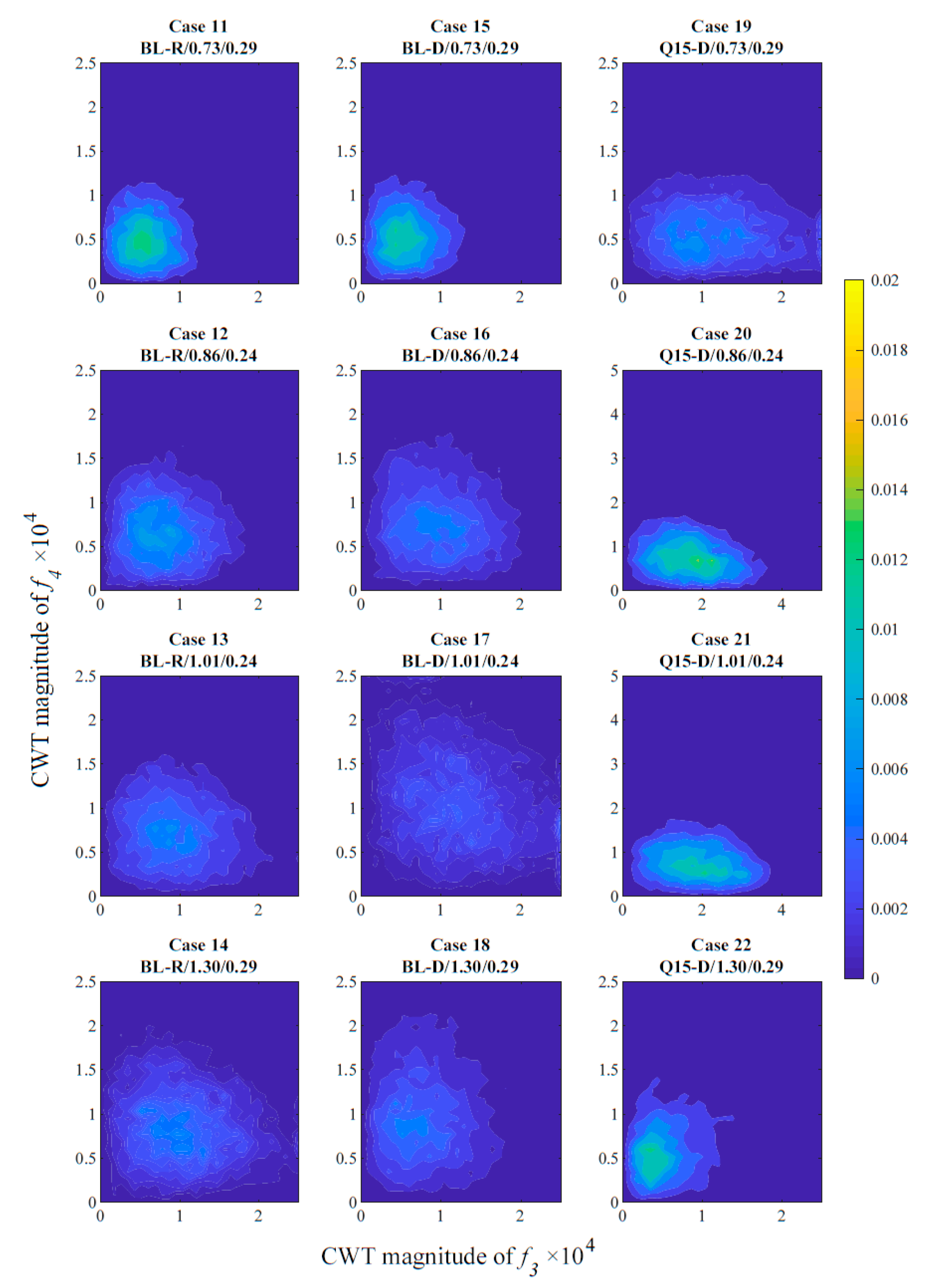
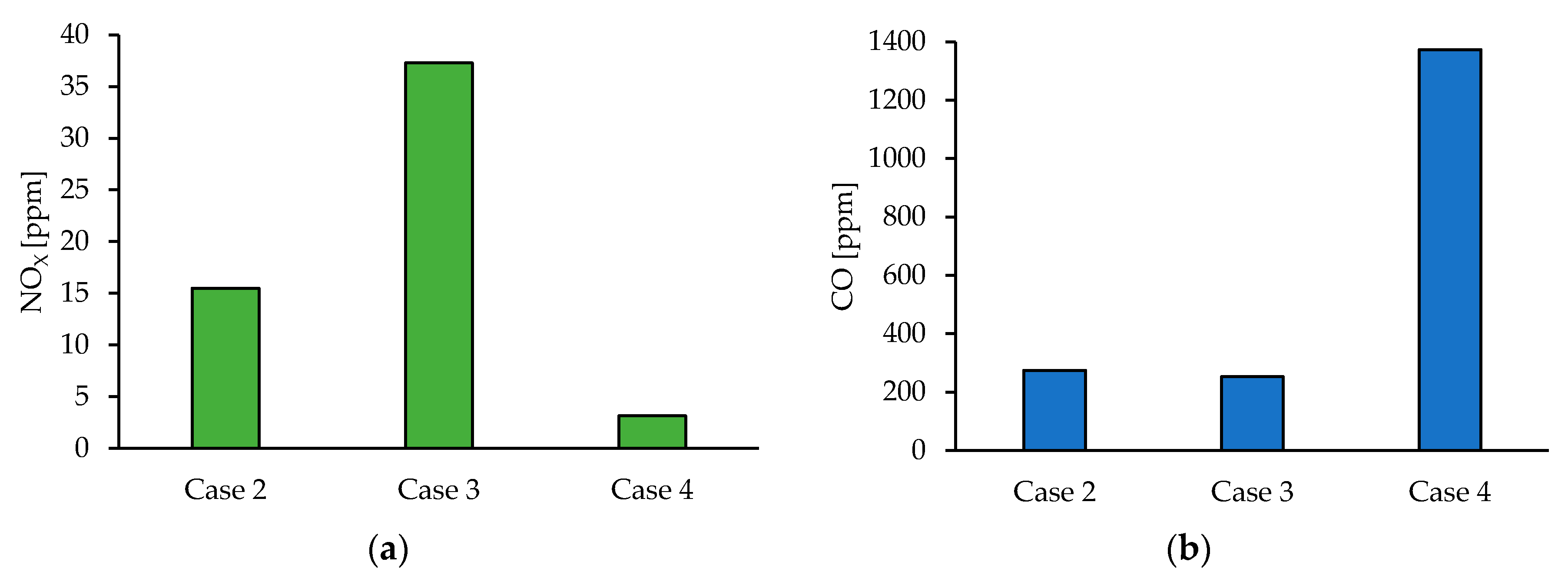
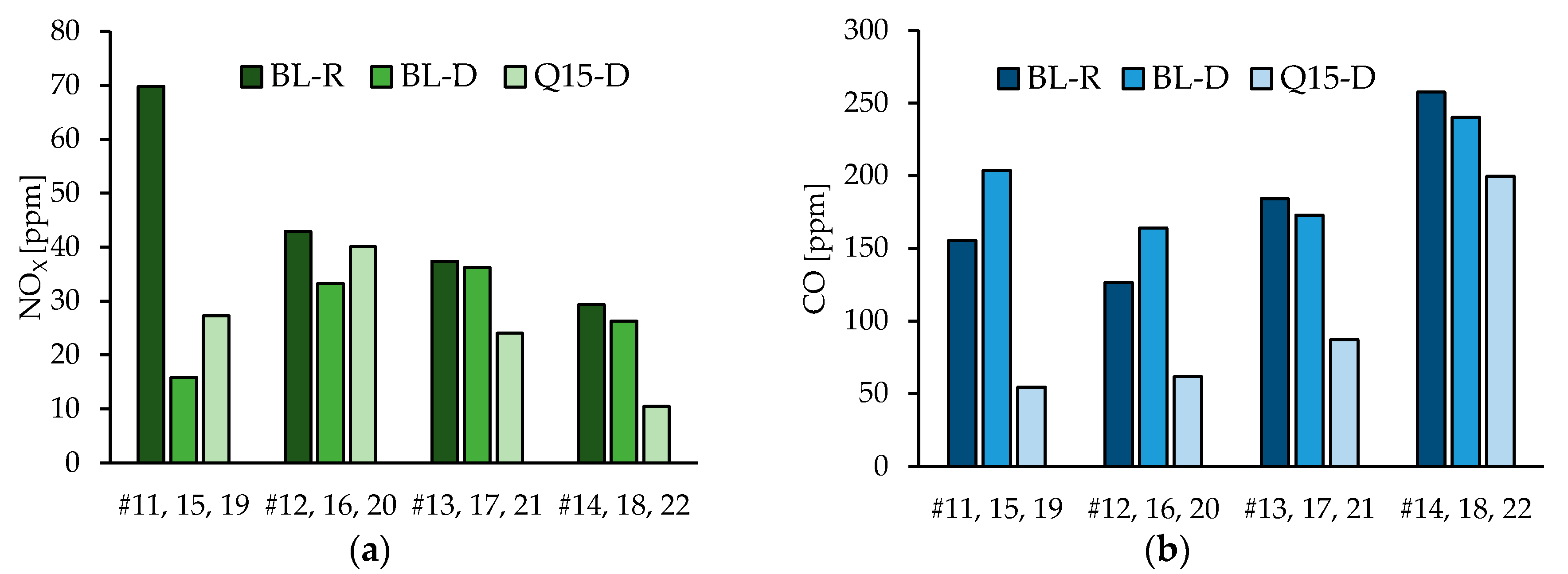
| Fuel (Blends) | Platform | Key Findings | References |
|---|---|---|---|
| waste cooking oil (WCO) and diesel | industrial burner | Neat WCO combustion is unstable. 20% WCO + 80% diesel oil blend provides a stable flame. | [15] |
| pyrolysis bio-oils | industrial burner | Pyrolysis bio-oil combustion is possible with low emissions; however, a system upgrade is required. | [16] |
| sunflower oil (SFO) and diesel | micro gas turbine | 15% and 30% SFO–diesel oil blends provided smooth operation with increased CO and NOX emissions. | [17] |
| liquefied wood and ethanol | micro gas turbine | Stable combustion and energy generation is possible, but CO and unburnt fuel emission is excessive. | [18,20] |
| WCO and kerosene | stove burner | Stable combustion up to the investigated 50% blend; however, CO and NOX emissions slightly increase. | [21] |
| soybean and algae oils | atmospheric burner | A novel atomizer design allowed stable operation and low emission without fuel preheating. | [22,23] |
| tire pyrolysis oil (TPO) and diesel | diesel engine | Neat TPO leads to unstable combustion. Blends show lower NOX and higher CO and HC emission. | [24] |
| C-heavy oil and crude jatropha oil (CJO) | utility boiler | Note that CJO is lighter fuel than C-heavy oil. NOX emission and wall heat flux were both decreased in the case of a 79 MW utility boiler. | [25] |
| Case No. | pg [Bar] | S [–] | λ [–] | Fuel | Geometry |
|---|---|---|---|---|---|
| Case 1 | 0.6 | 0.79 | 1.51 | D | BL |
| Case 2 | 0.3 | 0.39 | 0.70 | D | BL |
| Case 3 | 0.3 | 0.68 | 1.1 | D | BL |
| Case 4 | 0.3 | 0.81 | 1.34 | D | BL |
| Case 5 | 0.3 | 0.95 | 1.75 | D | BL |
| Case 6 | 0.6 | 0.79 | 1.51 | D | Q15 |
| Case 7 | 0.3 | 0.95 | 1.75 | D | Q15 |
| Case 8 | 0.3 | 0.98 | 1.88 | D | Q15 |
| Case 9 | 0.3 | 1.01 | 2.01 | D | Q15 |
| Case 10 | 0.3 | 1.04 | 2.18 | D | Q15 |
| Case 11 | 0.45 | 0.29 | 0.73 | R | BL |
| Case 12 | 0.8 | 0.24 | 0.86 | R | BL |
| Case 13 | 1.1 | 0.24 | 1.01 | R | BL |
| Case 14 | 1.6 | 0.29 | 1.30 | R | BL |
| Case 15 | 0.45 | 0.29 | 0.73 | D | BL |
| Case 16 | 0.8 | 0.24 | 0.86 | D | BL |
| Case 17 | 1.1 | 0.24 | 1.01 | D | BL |
| Case 18 | 1.6 | 0.29 | 1.30 | D | BL |
| Case 19 | 0.45 | 0.29 | 0.73 | D | Q15 |
| Case 20 | 0.8 | 0.24 | 0.86 | D | Q15 |
| Case 21 | 1.1 | 0.24 | 1.01 | D | Q15 |
| Case 22 | 1.6 | 0.29 | 1.30 | D | Q15 |
| Property | Diesel Oil | Crude Rapeseed Oil |
|---|---|---|
| Thermal power [kW] | 15 | 15 |
| Lower Heating Value [MJ/kg] | 43 | 37 |
| Fuel flow rate [g/s] | 0.35 | 0.4 |
| Dynamic viscosity [mPa s] | 3.45 | 3.28 (40.7 at 25 °C) |
| Density [kg/m3] | 830 | 833 (920 at 25 °C) |
| Surface tension [mN/m] | 28 | 24 |
| pg [Bar] | SMD [µm] | We [–] | AFR [–] |
|---|---|---|---|
| 0.3 | 27.1 | 779 | 0.778 |
| 0.45 | 22.0 | 1121 | 0.948 |
| 0.6 | 19.3 | 1438 | 1.09 |
| 0.8 | 17.1 | 1830 | 1.25 |
| 1.1 | 15.1 | 2363 | 1.45 |
| 1.6 | 13.3 | 3143 | 1.73 |
| pg [Bar] | SMD [µm] | We [–] | AFR [–] |
|---|---|---|---|
| 0.3 | 22.8 | 908 | 0.681 |
| 0.45 | 18.0 | 1307 | 0.829 |
| 0.6 | 15.5 | 1678 | 0.953 |
| 0.8 | 13.5 | 2135 | 1.09 |
| 1.1 | 11.7 | 2757 | 1.27 |
| 1.6 | 10.1 | 3666 | 1.51 |
© 2020 by the author. Licensee MDPI, Basel, Switzerland. This article is an open access article distributed under the terms and conditions of the Creative Commons Attribution (CC BY) license (http://creativecommons.org/licenses/by/4.0/).
Share and Cite
Józsa, V. Experimental Comparison of Diesel and Crude Rapeseed Oil Combustion in a Swirl Burner. Appl. Sci. 2020, 10, 4907. https://doi.org/10.3390/app10144907
Józsa V. Experimental Comparison of Diesel and Crude Rapeseed Oil Combustion in a Swirl Burner. Applied Sciences. 2020; 10(14):4907. https://doi.org/10.3390/app10144907
Chicago/Turabian StyleJózsa, Viktor. 2020. "Experimental Comparison of Diesel and Crude Rapeseed Oil Combustion in a Swirl Burner" Applied Sciences 10, no. 14: 4907. https://doi.org/10.3390/app10144907
APA StyleJózsa, V. (2020). Experimental Comparison of Diesel and Crude Rapeseed Oil Combustion in a Swirl Burner. Applied Sciences, 10(14), 4907. https://doi.org/10.3390/app10144907





